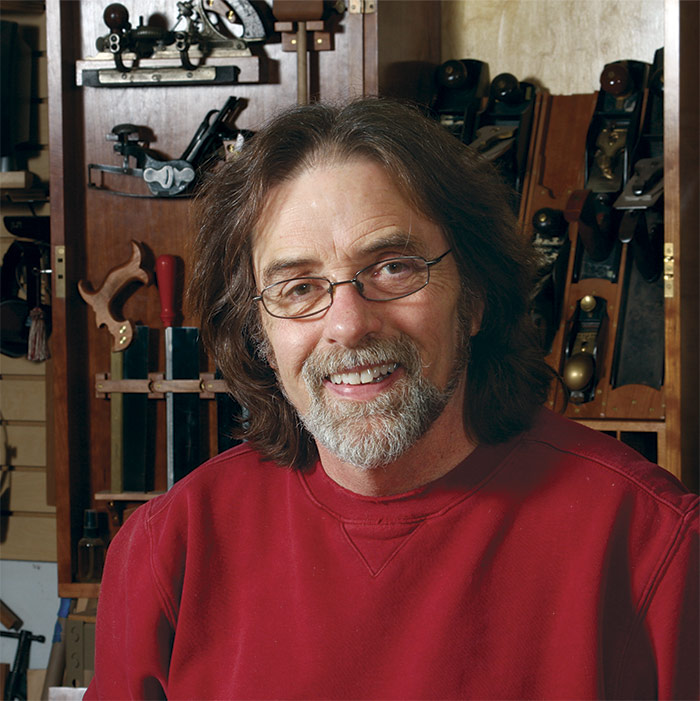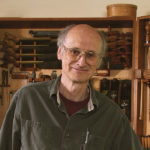The 2020 Program
We will be adding course descriptions and presenters as needed.
Keynote: 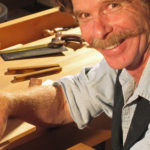
Subversive Woodworking: The Diary of a Mad HouseWright
Presenter: Roy Underhill
Don’t miss out on this unique opportunity to be wowed by woodworking legend Roy Underhill Saturday night at the Live banquet.
Handplane Essentials (Friday all-day session. Advance registration required.)
Presenter: Chris Gochnour
Many view the handplane as the universal symbol of woodworking, and for good reason. Planing represents a critically important component of the craft. Once you understand the basics of hand planing, your approach to woodworking will change. Tasks like trimming joinery, fitting drawers, and smoothing panels will all be done quickly and precisely, with the added bonus of a dust free and quiet environment. Best of all, you will experience the pleasure of taking a shaving and creating a beautiful product. In this day-long workshop, Chris will open the door to handplaning success. First, students will learn how to sharpen, tune up, and set up a handplance. Then Chris will guide them in how to use the tools successfully. You will use a bench plane to smooth a panel, clean up mill marks on a panel’s end and edges, and clean up a dovetail joint. You will use a block plane to soften an edge, tune a miter joint, put a radius on an edge, and chamfer an edge. At the end of the workshop, students will have a whole new appreciation for their handplanes and the knowledge to put them to work.
Make a Shaded Fan Inlay: Beyond the Basics (Friday all-day session. Advance registration required.)
Presenter: Bob Van Dyke
Shaded fans were a common decorative motif in Federal furniture of the late 18th century, often inlaid into the corners of tabletops and drawer fronts. The segments are shaded using hot sand and then put together to create a three-dimensional effect. This all day, hands-on class will start with a basic quarter fan—but that is just the beginning. Building on the basic sand-shading technique, Bob will introduce a series of other interesting possibilities: circles, half circles, and ovals with all sorts of curved segments. Don’t miss this chance to learn some new techniques that you can incorporate into your projects right away.
SketchUp Workshop (Friday all-day session. Advance registration required.)
Presenters: Dave Richards and David Heim
 |
 |
Join Dave Richards and David Heim for a special all-day workshop devoted to the SketchUp 3D design program. With this powerful, easy-to-use software, you can create furniture in the computer, just as you would in the shop. And when it’s time to build the real thing, you can work faster and with fewer mistakes. The morning session will cover all the basics, including the good practices you need to follow to make SketchUp behave. You’ll finish the session by creating a model of a Shaker table. In the afternoon, you’ll modify the Shaker table to learn some more advanced techniques: how to draw dovetails quickly and accurately, how to modify parts of the model, how to generate measured drawings and a cutlist, and much more. By the end of the session, you will have gained the confidence you need to use SketchUp to help improve your woodworking.
Tools and the Furniture Maker: A Personal History
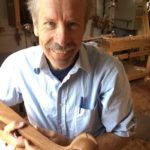
Presenter: Al Breed
Period furniture maker Allan Breed, a master of carving as well as casework with over four decades of experience in the shop, is talking tools. Breed is best known for impeccable reproductions of 18th and 19th Century New England furniture, but he has also built everything from elaborate exterior entryways to period perfect dollhouse furniture. Along the way he has bought, made, or modified all sorts of tools, and in this talk he describes tools that stand out for one reason or another: the oddest, most specialized ones, those he made to solve a particular problem, those he relies on most heavily or uses most happily, those that marked various milestones across his career. Along with his tools and their uses you’ll see the extraordinary pieces they produced.
17th-Century Furniture Making, In Action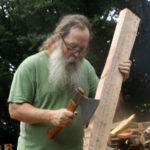
Presenter: Peter Follansbee
In this special weekend-long presentation, Peter will showcase his unique talents while building some “godawful, carved-to-the-hilt” piece of furniture. Enjoy the smells and sounds of freshly riven red oak as it is transformed into something useful and interesting. You’ll see Peter shape wood and hand-cut all manner of joinery, from mortise-and-tenons to grooves, using traditional joiner’s tools—including an ax. You’ll be entertained by his sharp wit, and amazed by his sharp woodworking skills.
Put Your Handsaws to Work
Presenter: Chris Gochnour
Contemporary woodshops feature a range of power tools that meet nearly every need. The best woodshops and woodworkers, however, also have a range of handsaws nearby that, frankly, don’t get used enough. Indeed, a handsaw often might be the best option for the work at hand. In this presentation, Chris will survey a range of saws, including joinery saws and coping saws. He will share a variety of exercises to help you become a more proficient sawyer. Chris will then demonstrate how to cut dovetails, tenons, dadoes, and bridle and miter joints. He will also demonstrate crosscutting and ripping. Finally, he’ll share methods for refining a sawn surface using chisels, planes, and a shooting board.
How to Make and Use Templates Successfully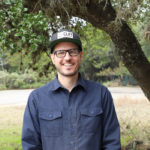
Presenter: Philip Morley
Philip Morley’s elegant furniture is filled with subtle tapers, curves, angles and coves. Making the components could be challenging, because as each part is shaped it loses straight and square reference surfaces. But by using templates to guide cuts on the tablesaw and router table, dispensing with the need for reference surfaces, Morley can do all the shaping quickly, safely, and accurately, making multiple identical parts, all with no layout. In this presentation Morley explains how you can produce parts—however unusual in shape—for most any project using these template techniques.
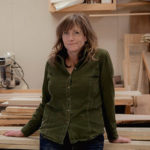 Discover the Versatility of Milk Paint
Discover the Versatility of Milk Paint
Presenter: Nancy Hiller
Woodworkers who specialize in Colonial and Shaker furniture are likely familiar with milk paint, as it was a common finish on both styles of furniture. But milk paint, which has been around for thousands of years, offers creative possibilities for all woodworkers, from period makers to contemporary designers and builders. This durable and versatile finish contains no toxic ingredients and comes in a surprising variety of colors. Some woodworkers are reluctant to try milk paint, concerned that it may be difficult to use. In this session Nancy will show that milk paint is easy to mix and apply—you can’t mess it up! She’ll also show how it can be used with different topcoat treatments to create unique decorative effects, such as color washes, crackle finishes, and a non-toxic pickling finish for oak, in addition to the more widely known layered and opaque surfaces.
Making and Fitting a Traditional Drawer
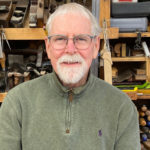
Presenter: Philip C. Lowe
Fitting Drawers can be a frustrating task for many woodworkers. This session is aimed at giving you a systematic approach in the numerous steps necessary to fit a drawer front and to build the drawer box. Students will come away with the correct order while fitting the fronts and how to adjust for a drawer opening that are not quite square. Also what to do when a drawer isn’t square or has twist. This valuable session will take the mystery out of fitting drawers.
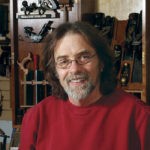 Router Table Basics and Beyond
Router Table Basics and Beyond
Presenter: Bob Van Dyke
What began years ago as a homemade and simple device to hold a router has evolved into a common piece of shop equipment. That’s because the level of precision and the variety of tasks possible with a router table make it a must-have tool in any shop that incorporates machines. In this presentation Bob will discuss when to use a router table vs. a handheld router. He will demonstrate the basics of using a router table and the tasks at which they excel. Then he’ll show a variety of jigs and techniques, some basic and some that you may never have seen or even thought of. Safety is always important, and you will gain a clear understanding of the importance of feed direction and just what “climb cutting” really means. Don’t miss this valuable opportunity to understand router tables and how they can be an important part of your woodworking tool arsenal.
 Make Any Bench Work Harder
Make Any Bench Work Harder
Presenter: Chris Schwarz
It’s easy to be beguiled by the thought of a new workbench – something with tons of mass and brand-new vises. If you love building workbenches, go for it. But if you prefer building furniture, there are a dozen ways (many of them inexpensive) that you can improve an existing bench. Even if you have a lightweight commercial bench, you can greatly improve it with some tricks from old-school workbenches. Many of the tricks involve a few scraps of wood and metal. And rethinking what a good working bench should look like.
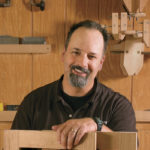 Stress-free Approach to Installing Hinges and Locksets
Stress-free Approach to Installing Hinges and Locksets
Presenter: Michael Pekovich
Installing hinges or locks at the end of a build can make or break a project, or at least add a lot of stress to the situation. In this session Mike will talk about choosing the right hinge for a project and different options for placement, and he will demonstrate his method for making simple routing jigs for fast, accurate mortises. In addition, you’ll learn a nifty method for adding a lockset to a door, drawer, or lid that makes the installation process fast and ensures gap-free results.
A Carver’s Life: 40 Years of Technique and Inspiration
Presenter: Kristina Madsen
The intaglio carving technique, used to cut decorative patterns into the surfaces of furniture, is integral to Kristina’s work. She gained proficiency in this technique, which is typical to the Oceanic region, during a nine-month study in the Fiji Islands. Since that time, the carved surface has been elemental to her work. This session will include a photographic presentation of Kristina’s furniture, with comments on her design process, as well as a carving demonstration. You also will have a chance to examine the sample boards on which she develops and refines the patterns for each of her pieces.
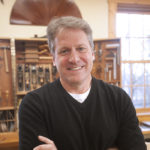 Shellac: The Wonder Finish
Shellac: The Wonder Finish
Presenter: Tom McLaughlin
A fine finish can make all the difference in the success of a project. And shellac, a choice of old masters, continues to produce beautiful museum-quality surfaces today. In this presentation, Tom will explore the characteristics and versatility of this “wonder” finish with a focus on the practical approaches and techniques used to achieve great results. Along the way, Tom will present samples and demonstrations showing the processes of preparation and application, including techniques for brushing, spraying, rubbing out, and waxing to achieve shellac’s timeless and classic effect.
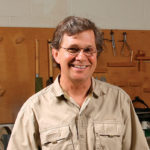 Set up Your Bandsaw for Success
Set up Your Bandsaw for Success
Presenter: Roland Johnson
The bandsaw is an essential tool in the woodshop, ideal for cutting curves, resawing heavy timbers, ripping stock, and even crosscutting. It’s a relatively simple machine, but for it to work well, the bandsaw needs to be set up properly. Not paying attention to subtle setup details will make this friendly machine into a destroyer of wood. In this session you’ll learn the basics of what makes a good bandsaw. Rollie will also delve into guide setup, blade technology, and a host of other details that will make you and your bandsaw happy shop companions.
A Lifetime of Woodworking Tips and Tricks
Presenter: Christian Becksvoort
Chris has kept his one-man shop in business for decades by constantly finding new ways to improve his results while trimming valuable minutes from each process. In this presentation he will unveil his favorite tips for furniture makers of any level. You’ll get a wide array of secrets, for everything from cutting dovetails, pegging tenons, and turning beautiful knobs, to graduating the sizes of drawers, predicting wood movement precisely, and turning a single photo into a full project plan.
Spokeshaves: The Unsung Heroes of the Workshop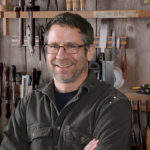
Presenter: Peter Galbert
This presentation just might change your opinion of the spokeshave. They come in all sorts of configurations and styles—flat or curved sole, metal or wood—that make them ideal for shaping and smoothing wood. Putting a well-tuned shave to work, however, reveals so much more about the character of wood than any handplane can. These nimble tools get you close to the material, giving you an increased awareness of wood structure while adding speed and sensitivity to any shaping task. In this session, you will learn all about the variations in the tools, as well as the how, why, and where they are used. You will also learn about tuning and sharpening them to get the best results.
Design Details that Dazzle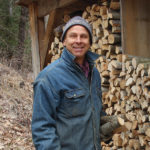
Presenter: Garrett Hack
Creative details will enrich your work and add dazzle to your designs, but they also often have a practical purpose—softening or protecting an edge, lightening the visual weight of a part, or disguising a joint. This session will focus on chamfers that highlight an edge, incised beads and cockbeads that outline and beautifully round an edge, simple inlays that pop, and shaped surfaces that have tactile appeal. You’ll learn the best ways to incorporate these ideas into your work, plus Garrett will demonstrate how to use hand tools to create the most polished details right off the tool.
Casework: A Surgical Approach to Joinery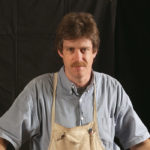
Presenter: Steve Latta
Thishttp://presenters/#Latta presentation will focus on building a concise and systematic approach to the construction of both a bookcase and hanging corner cabinet. There are myriad ways to tackle these projects, some more direct than others. Steve will provide an in-depth look at a broad assortment of joints, including full and half-blind dovetails, beaded face frames, pattern sawing, corner miters, and slip tenons, with wood movement always being a prime consideration. Joinery should be a fluid process, and Steve’s goal in this class is to help you develop a strategy for establishing that flow.
Sash Joinery, the Old-Fashioned Way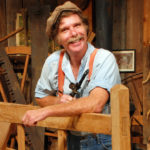
Presenter: Roy Underhill
Make your own damn windows! Using original 19th-century handplanes, Roy Underhill will show how to make both scribed-tenon windows for buildings, as well as the lapped miter windows for cabinet work. Roy will work with both the American, (stick and rabbet plane) technique as well as the English (sash fillister plane and sticking board) process. From making the initial story stick to the final scribing with gouges and planes, you’ll learn how to undertake this most exacting challenge in joinery and declare your independence from the window-industrial complex!
